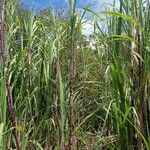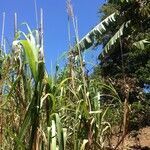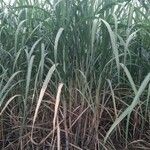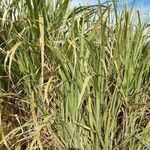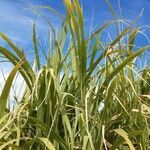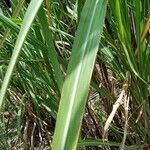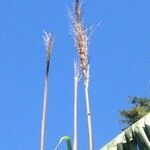Perennial; culms erect or ascending, as much as 4 m. high, glabrous, the lower internodes short; sheaths overlapping, rounded, glabrous, or softly pubescent toward the summit, densely villous in the throat, the lower ones readily falling away from the culm; ligule firm, dark brown, truncate, minutely ciliate, about 5 mm. long; blades elongate, broad, with prominent midnerve, sharply serrate, densely pubescent or villous on the upper surface at the base; panicles very large, dense, plumy, silvery or pinkish, the long branches drooping; spikelets 4-5 mm. long.
A tall thick stemmed clumpy grass. It has many nodes. It grows 1-6 m tall. It spreads 100 cm wide. A large number of different cultivated varieties occur. The leaves are long and narrow. They taper to the tip. They are rigid and droop at the tip. The cane varies in thickness, length of nodes, colour etc. The stalks have distinct nodes and the bottom of the leaf is wrapped in a sheath around the stalk. The flower is brownish. It is surrounded by dense silky white hairs.
Culms up to 6 m. high.
